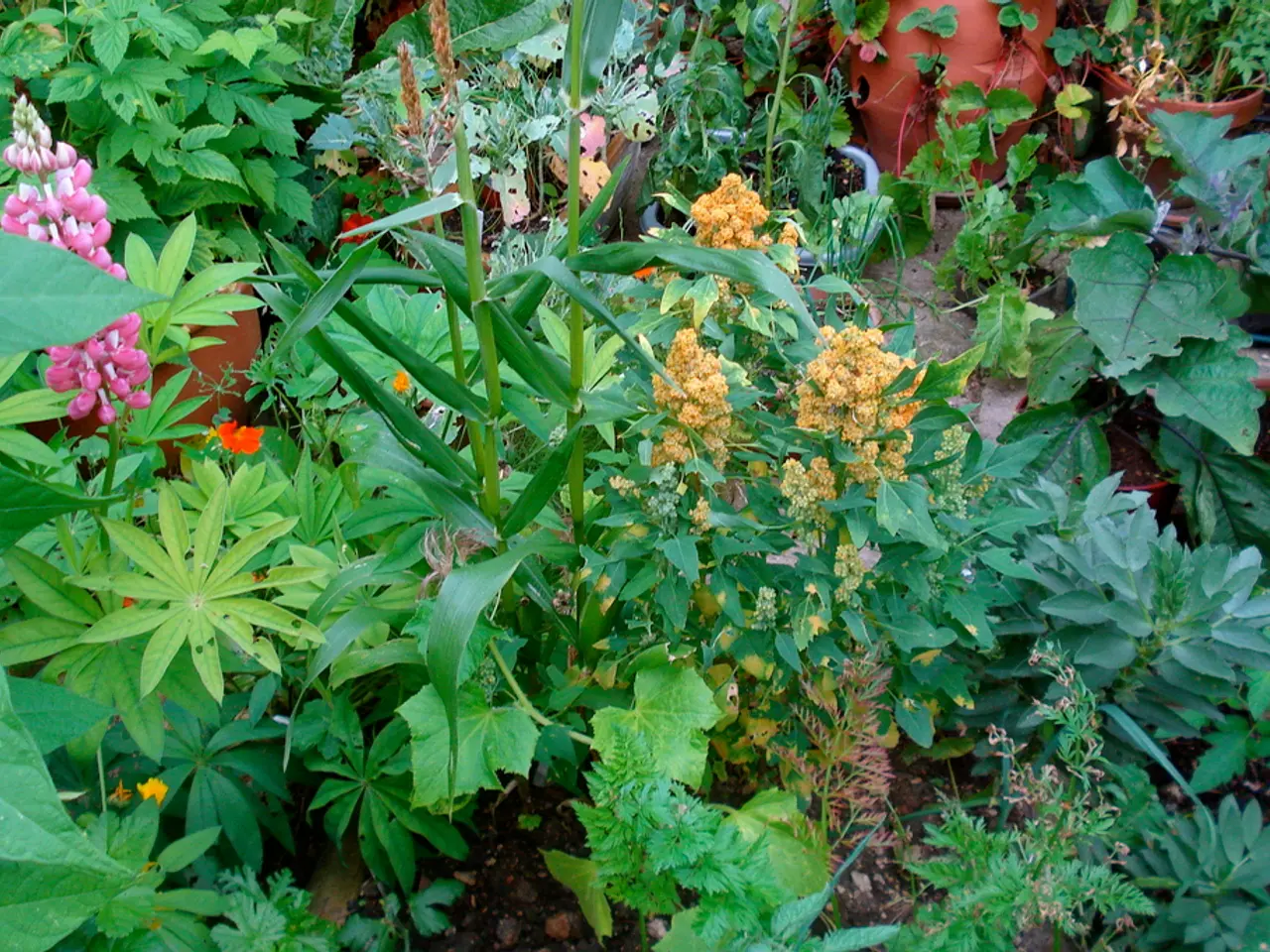Guide for Successfully Cultivating Organic Eggplants Now Available!
Growing organic brinjals (eggplants) at home can be a rewarding experience, offering fresh, flavorful produce and control over pesticides. Here's a step-by-step guide to help you get started.
**Step 1: Choose the Right Variety** Select a suitable organic brinjal variety, such as Thai Round Green or Thai Purple, known for their flavor and tolerance to heat.
**Step 2: Prepare the Seeds** - **Seed Starting Indoors**: Begin by sowing seeds indoors 6-8 weeks before the last frost date. - **Seed Depth and Soil**: Plant seeds about ¼ inch (0.6 cm) deep in peat pots filled with a rich compost-based potting mix. - **Soil Temperature**: Maintain soil temperatures between 75-85°F (24-29°C) to aid germination, which typically occurs within 7-14 days.
**Step 3: Nurture Seedlings** - **Humidity and Watering**: Cover pots with clear plastic wrap to retain humidity and gently water to keep the soil moist but not soggy. - **Lighting**: Provide moderate light until seedlings are ready for transplanting.
**Step 4: Transplant Seedlings Outdoors** - **Temperature and Sunlight**: Wait until outdoor temperatures consistently exceed 60°F (15°C) and there is no threat of frost. Choose a location with at least 6-8 hours of direct sunlight. - **Soil Preparation**: Mix generous amounts of compost into well-drained soil to enhance soil fertility. - **Spacing**: Transplant seedlings 18-24 inches apart to allow for good air circulation and growth.
**Step 5: Maintain Soil Health** - **Fertilization**: Use organic fertilizers such as compost tea or well-rotted compost to maintain soil fertility without introducing chemical additives. - **Mulching**: Mulch around the plants to retain moisture and suppress weeds.
**Step 6: Pest and Disease Management** - **Organic Control Methods**: Employ organic methods to control pests and diseases, such as introducing beneficial insects or using neem oil. - **Regular Inspection**: Regularly inspect your plants for signs of pests or diseases.
**Step 7: Harvest** - **Timing**: Harvest brinjals when they are fully colored and glossy. The skin should be slightly tender to touch but not soft. - **Technique**: Use scissors or a sharp knife to cut the stem, avoiding injury to the plant.
**Step 8: Saving Seeds for Next Season** - **Select Healthy Fruits**: Choose the healthiest fruits for seed saving. - **Dry Seeds**: Allow the selected fruits to fully ripen, then scoop out seeds, wash them, and dry thoroughly on paper towels. - **Store Seeds**: Store dried seeds in labeled envelopes or jars in a cool, dry place for planting next season.
By following these steps, you can enjoy a healthy and flavorful harvest of organic brinjals. Remember, common brinjal growing problems include pests, diseases, and poor soil quality. Address these issues with organic methods, such as introducing beneficial insects or using neem oil.
Brinjals are versatile, used in dishes ranging from curries to grilling, and are suitable for container gardening. They require consistent watering, with the soil remaining moist but not waterlogged, and prefer evenly moist soil. Brinjals support heart health by being low in calories and high in potassium, and promote hydration due to their high water content. They are also rich in nutrients, including fiber, antioxidants, and several vitamins.
Growing brinjals organically at home offers benefits such as better taste and control over pesticides. To extend the harvest, pick any overripe fruits as soon as they appear to encourage the plant to produce more fresh fruit. Brinjals are perfect for home gardens or backyards and are suitable for warm climates. Happy gardening!
Growing brinjals organically at home is a rewarding experience, providing fresh, flavorful produce while ensuring control over pesticides. Here's a comprehensive guide:
- Choose a suitable organic brinjal variety, such as Thai Round Green or Thai Purple, for flavor and heat tolerance.
- Sow seeds indoors 6-8 weeks before the last frost date, planting them ¼ inch deep in peat pots filled with rich compost-based potting mix, maintaining soil temperatures between 75-85°F.
- Cover pots with clear plastic wrap to retain humidity and provide moderate light until seedlings are ready for transplanting.
- Transplant seedlings outdoors when temperatures exceed 60°F and there's no frost threat, choosing a location with at least 6-8 hours of direct sunlight and well-drained soil.
- Maintain soil health using organic fertilizers like compost tea or well-rotted compost, and mulch around the plants to retain moisture and suppress weeds.
- Employ organic methods for pest and disease control, such as introducing beneficial insects or using neem oil, and regularly inspect your plants for signs of issues.
- Harvest brinjals when they are fully colored, glossy, tender, and slightly firm to touch. Use scissors or a sharp knife to cut the stem.
- Save seeds for next season by choosing healthy fruits, allowing them to fully ripen, washing, drying thoroughly, and storing in a cool, dry place.
Brinjals are versatile, found in global cuisines from curries to grilling, and suitable for container gardening. They support heart health, are low in calories, and high in potassium, promoting hydration due to their high water content. Rich in fiber, antioxidants, and several vitamins, these nutritious fruits are perfect for home-and-garden enthusiasts, cooking enthusiasts, and anyone interested in the health-and-wellness, food-and-drink, and lifestyle sectors. Growing brinjals organically at home offers better taste, control over pesticides, and an extended harvest, making it a rewarding addiction for indoor gardeners, balcony green thumbs, and those living in warm climates. Happy gardening and healthy cooking!





